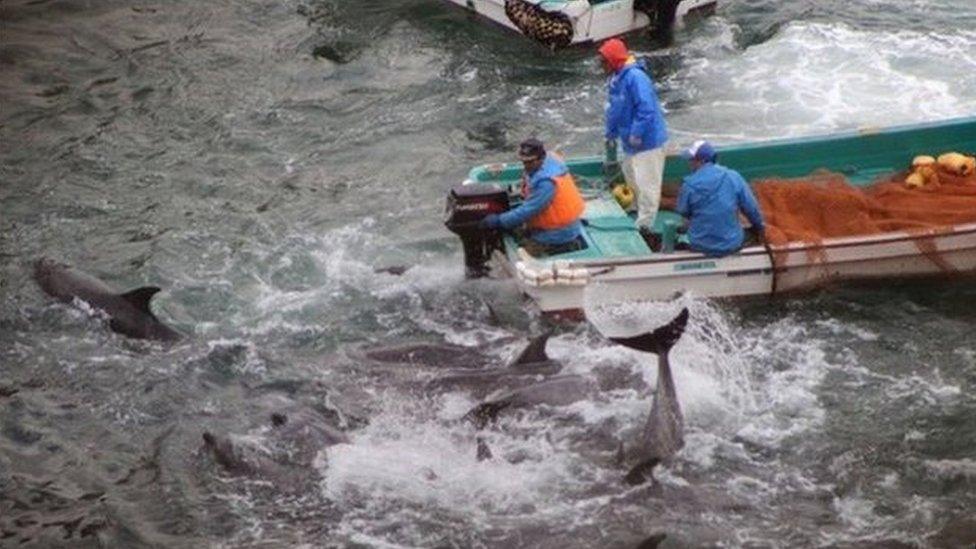Japan whale hunting: 'By-catch' rule highlighted after minke death
- Published
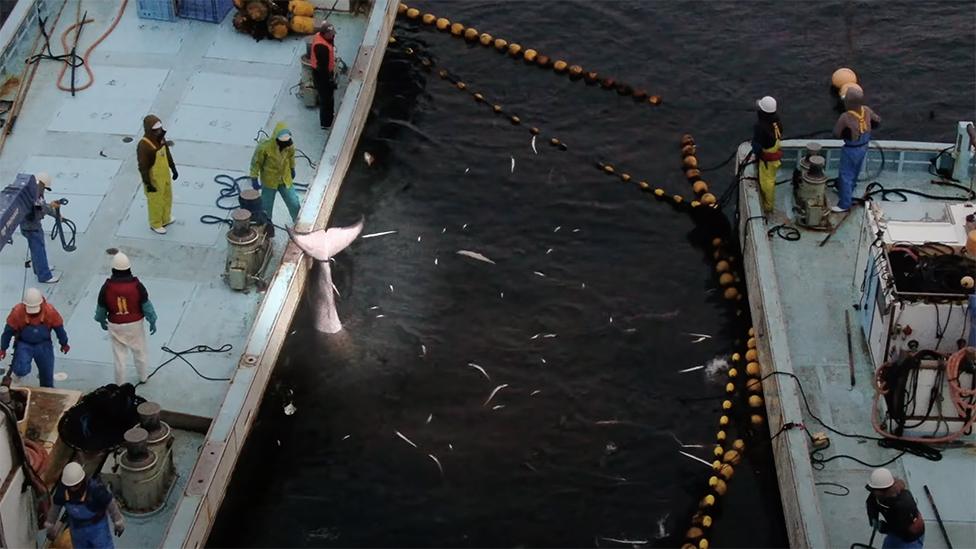
The whale initially became trapped in the fishermen's nets but was later killed
A video showing the final, brutal 20 minutes of a minke whale's life at the hands of Japanese fishermen sent a ripple of shock through international media.
But activists says the footage of the whale being slowly drowned, after becoming trapped in their nets, has merely highlighted an entirely legal loophole which is used to kill dozens of whales each year.
"This is neither an exceptional nor unexpected occurrence," Mark Simmonds, senior marine scientist at Humane Society International (HSI), said in a release after the whale's death.
"But what is exceptional is that this whole process was witnessed and filmed for the world to see."
Indeed, the young mammal's death once again has exposed the gaping chasm between Japan and the wider world when it comes to whale hunting: activists see a cruel and avoidable death, but the fishermen see a gift from the sea.
Warning: Upsetting content
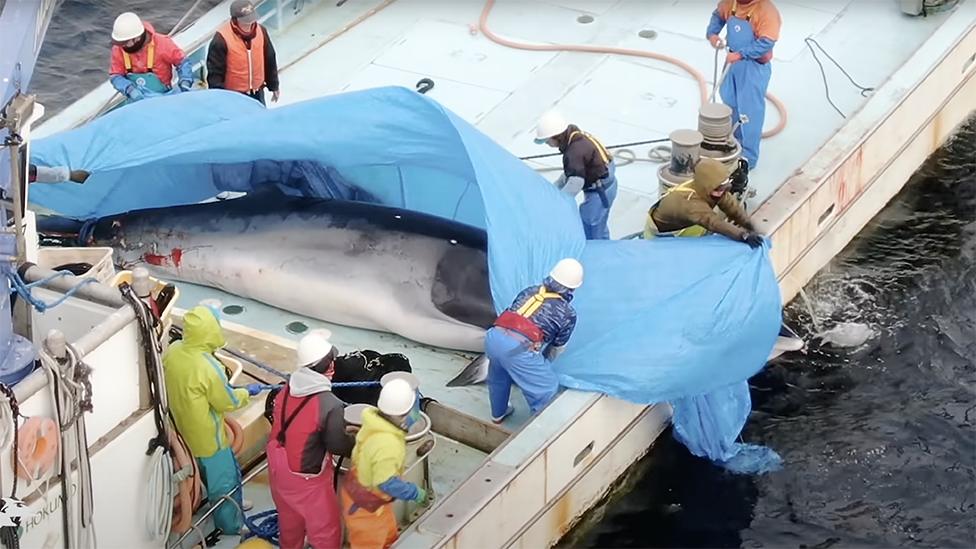
It took 20 minutes for the whale to die
Japan - like a number of other nations around the world - has a centuries-long tradition of whale hunting. After the Second World War, as the country struggled to feed its population, whale meat became a staple of the Japanese table.
But for those who support whale hunting, it goes further than simply food on the plate: it is a source of national pride.
Yet for more than 30 years, fishermen were not allowed to hunt whales off the coast of Japan. The country had signed up to the International Whaling Commission (IWC) following a decades of overfishing which had pushed whale populations to the brink of extinction.
In July 2019, the whaling boats set off once more, despite demand for the meat having dropped. Supporters spoke to the BBC at the time of their relief that "the culture and way of life will be passed on to the next generation".

The first commercial hunting trips in 30 years took place in July 2019
This time, there were strict quotas in place, allowing for responsible hunting. The first year, the quota allowed for some 52 minke, which are not endangered, as well as 150 Bryde's and 25 sei whales, to be caught over the course of the season - a total of 227. In 2020 and 2021, that total rose to 383.
The numbers are split between the official whalers, the government and a third category, known as "by-catch". This year, 37 whales can be butchered and sold by fisherman under this heading.
The minke whose death was caught on camera was one of the 37 considered "by-catch" - a whale which no one set out to catch, but which just happened to swim into the wrong place, at the wrong time.
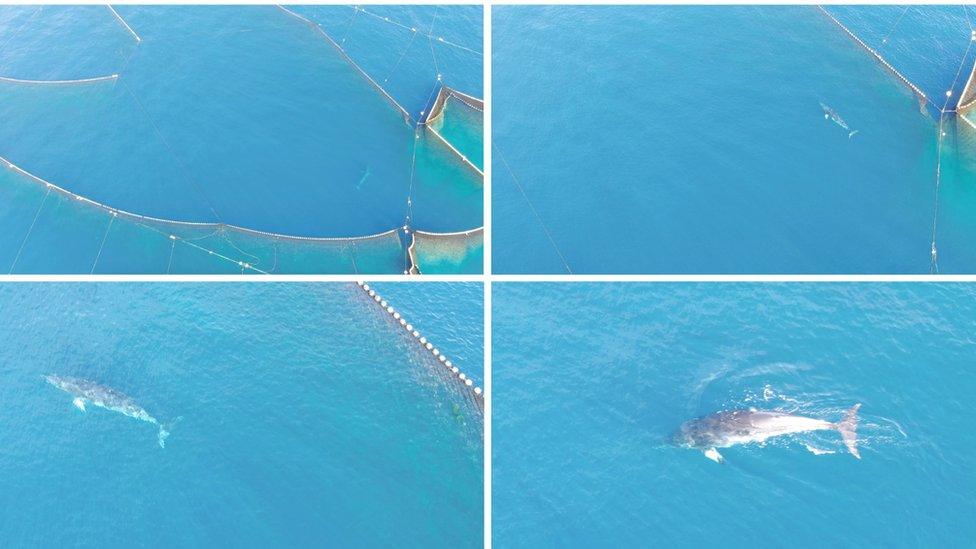
The whale became trapped in the net on Christmas Eve
Ren Yabuki, the head of Japanese animal rights NGO Life Investigation Agency (LIA), first spotted the whale trapped in the permanent net off Taiji - the same town made famous for its annual dolphin hunt in The Cove - on 24 December.
Initially, he hoped the fishermen would raise the nets and release the whale. He watched as "one guy tried for 10 minutes".
"But they stopped trying," he recalls. He suspected the fishermen "did not want to open the net because inside there were too many fish".
Over the course of the next 20 days, he lobbied the association which owns the net to work to release the whale. He also began to upload the videos his drone filmed each day, allowing people around the world to watch as the whale became more desperate, at times attacking the net, at times just spinning in the confined space.
The whale's plight began to make headlines in other parts of the world. More and more people became invested in the whale's release.
A drone filmed the whale battling for its life
But then, on 11 January, he watched helplessly as two boats manoeuvred the whale so it was trapped between them. He then watched as they caught and held the whale's thrashing tail, forcing its head underwater for 20 minutes, until it finally drowned.
By this time, the boat was already covered in the whale's blood, lost as it injured itself trying to get free.
Days after the minke's death, undercover footage recorded neatly packaged whale meat, priced at 398 yen ($3.80; £2.77) per 100g, in the local supermarket. Of course, it may not have been the whale which died off Taiji.
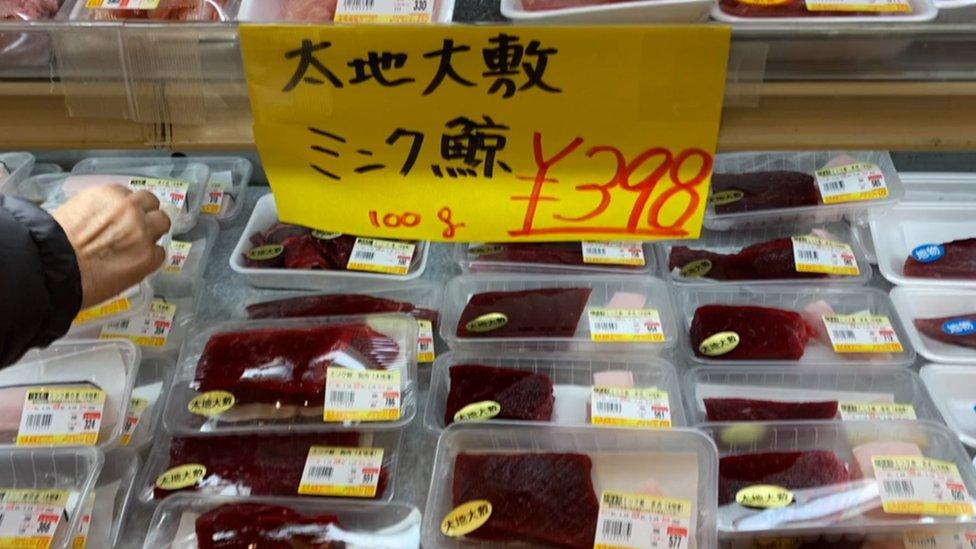
For supporters of whale hunting, there was nothing amiss with what the drone captured that day.
"A number of Japanese people feel sympathy to such [an] animal... trapped in a set net and wish it [to] be released, if possible," acknowledged Hideki Moronuki, director for fisheries negotiations at the Fisheries Agency, in an email to the BBC.
"However, at the same time, there are many people who consider that such an animal is a bounty from the ocean and has to be fully used with a great gratitude."
For the fishermen, the whale getting trapped in the net was a bonus. Under usual circumstances, they don't have the right licence to catch and sell whales.
But this, say activists, is where the quota system falls down, as it disincentives fishermen from releasing the mammals. Mr Simmonds, of the HSI, suggests it goes further than that even.
"The term 'bycatch' relates to accidental or incidental capture of non-target animals in all fishing operations," he tells the BBC. "The capture of whales in traps in Japan is not bycatch."
In fact, he argues that catches like this are both "predictable and deliberate".
But just because they end up in the net doesn't mean they will be killed.
In this net alone three whales have been caught in six weeks, including the minke. The first, another minke whale caught in late November, was released the next day. The third, a humpback whale, was found dead floating tangled in the nets the day after the second minke was killed.
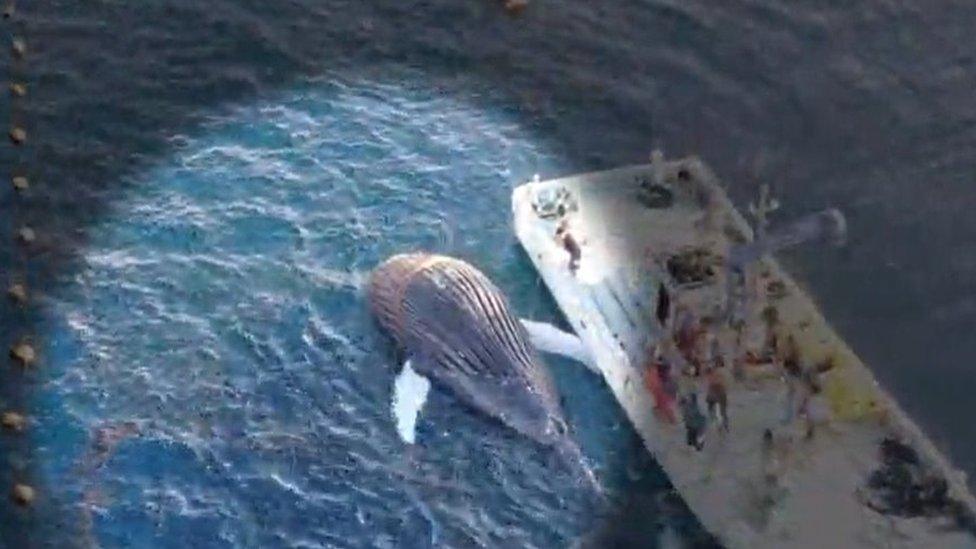
The fishermen would not have been able to sell the meat from this whale
Taiji Fisheries Association has argued that it was left with no choice but to kill the second whale. "The tide is fast and it is difficult to let go of the whale," it said in a statement at the time.
And Mr Moronuki, director for fisheries negotiations at the Fisheries Agency, adds in his email that there was no other way to kill the animal when they finally decided to act.
"When it was decided to kill the animal the sea condition was too harsh to take other killing method," he wrote in his email.
"I believe that, for those reasons, most of Japanese people considered that a sole realistic and pragmatic method had been chosen and did not take any emotional nor commotional action."
But for Mr Yabuki and Mr Simmonds, it is the brutality of the animals death which lingers on.
"My hand was shaking with upset - it was so, so sad. I had so much anger," Mr Yabuki told the BBC. "I want to rescue the whale, to release. But I could not."
"Forcing underwater the head of a mammal evolved to hold its breath for long periods, so that it slowly runs out of oxygen, is an acutely cruel killing method by any standards," Mr Simmonds added.
Activists hope that videos like the one of the minke's death will inspire change in Japan. But there is little will from the government to roll back on a policy which has proved popular among Japan's fishing communities, meaning this video is unlikely to be the last one the world sees.
- Published2 September 2019
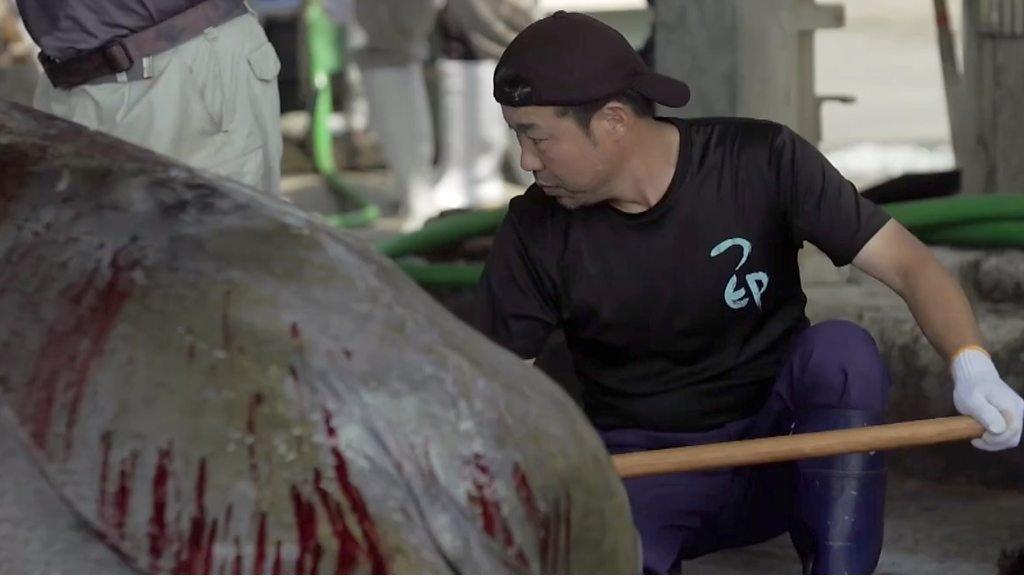
- Published2 July 2019
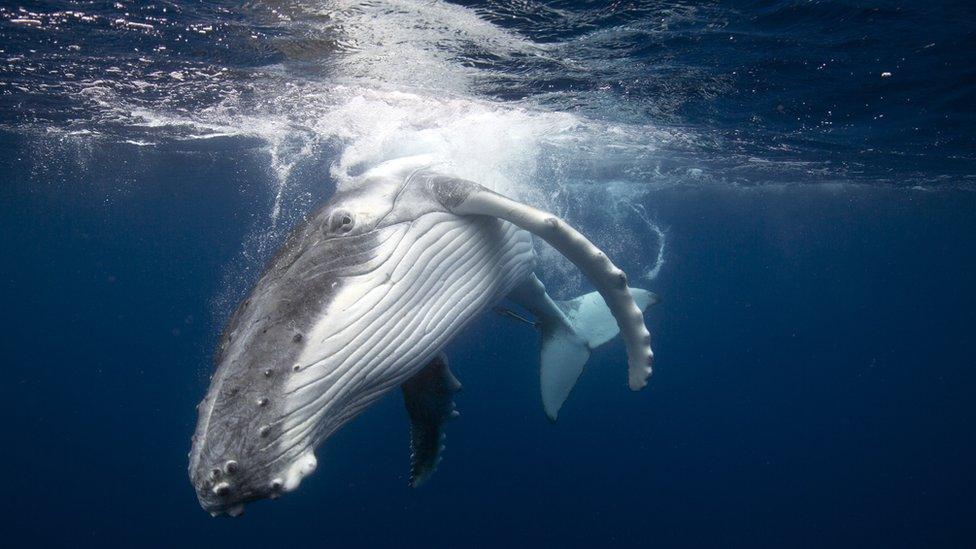
- Published2 September 2019
